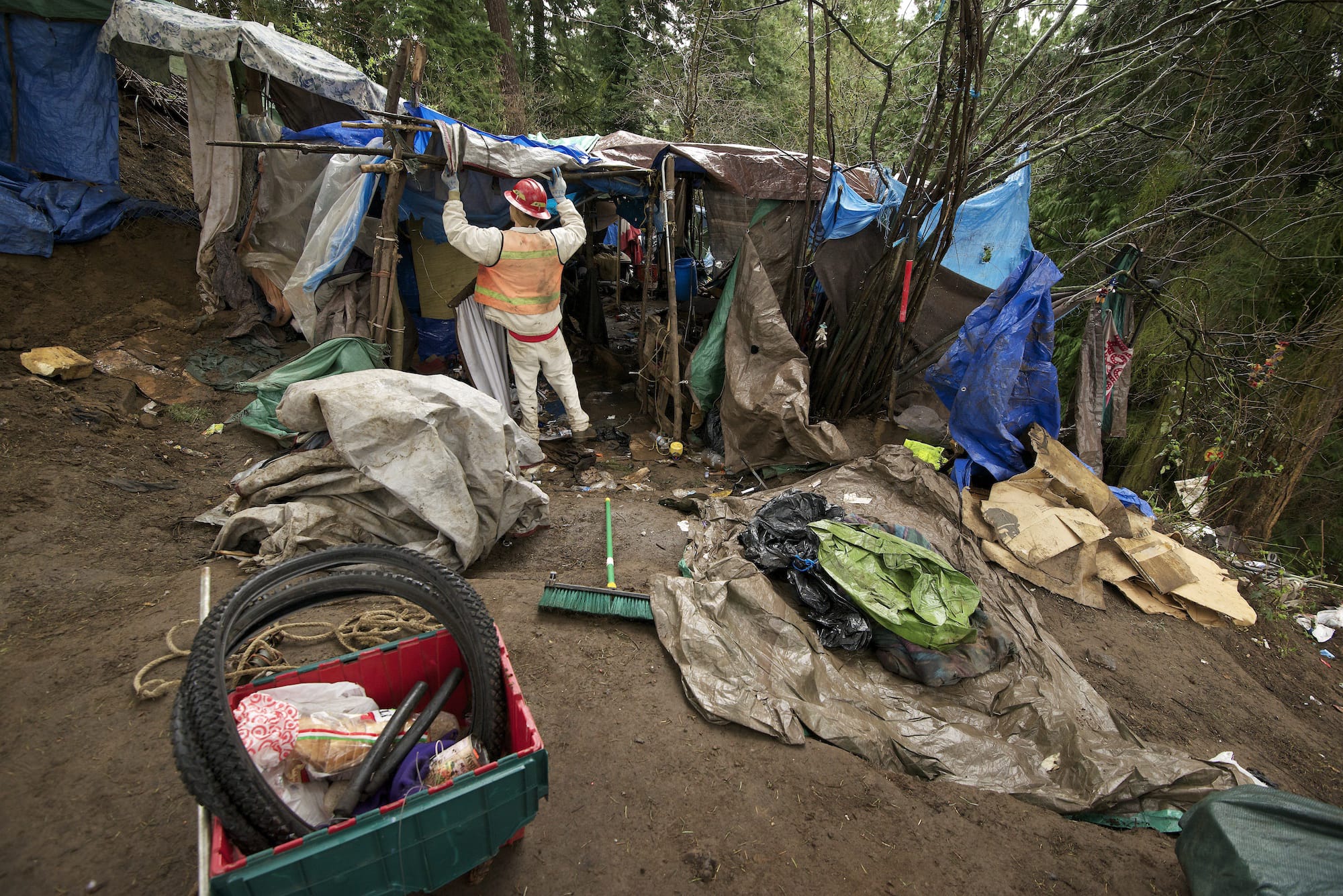A single-day snapshot of homelessness in Clark County in January found 217 “unsheltered” people living outdoors, in makeshift camps or in cars.
But that’s not the whole story when it comes to local homelessness. The annual Point In Time Count, undertaken by the Council for the Homeless and sister agencies, also found 227 people staying in emergency shelters and 251 living in “transitional” situations — that is, placements by agencies in private apartments or other situations that are considered a step back from homelessness.
Those people still are counted as homeless by the federal government, which uses the annual Point In Time Count to track trends, set policy and write budgets.
Add all the local numbers, and you’ve got a total of 695 people who were counted as homeless in Clark County on Jan. 30. The number is virtually unchanged from the 2013 count of 693 homeless people.
But hidden within that tally are indicators of the way homelessness is changing.
The 217 unsheltered people this year represent the third year of a moderate rise; in 2012, the unsheltered number was 176, and in 2013, it was 190.
Within that group of 217, single people dropped from 154 to 107 in 2014. And the number of unsheltered family groups — households with children — jumped from 11 in 2013 to 37 in 2014. Those 37 family groups represent 107 people.
For most of those families, homelessness is not chronic but episodic — that is, a break from the norm, caused by a crisis such as job loss, foreclosure or eviction — and a local quick-reaction assistance program called Rapid Rehousing can help keep the episode short, according to Andy Silver, the executive director of the Council for the Homless. Rapid Rehousing offers short-term emergency rental assistance, as well as help with moving and case management.
But Clark County’s rental market is so tight, Silver said, that landlords “have their pick of tenants.” Bad credit, previous evictions and criminal records are perfectly legitimate reasons for a landlord to turn down rental applications.
Rapid Rehousing “does not have enough resources to meet the need in the community. We have a list of about 90 families waiting for housing right now,” Silver said.
Silver said Clark County’s Department of Community Services is working on incentives to encourage local landlords to take a risk on housing the homeless. And the Council for the Homeless is working with local faith communities to develop a Housing Support Network that will provide additional, volunteer help.
If you have a property to rent and are interested in learning more, call David Moore at 360-699-5106, ext. 112.
The Point In Time Count also found 60 chronically homeless people — 25 in shelters and 35 unsheltered. It found that 119 homeless people are “severely mentally ill” and that 57 of those people are unsheltered; and 118 homeless people are victims of domestic violence. Those numbers are all virtually unchanged from previous years.
The Council for the Homeless and the Vancouver Housing Authority have proposed a downtown studio-apartment building for the most at-risk, chronically homeless people. The heavily subsidized 30-unit building would not require their sobriety, but the permanent housing would come with offers of treatment and case management.
While not officially part of the Point In Time Count, the Council pointed out that local school districts track homeless students, too. School districts reported that 768 children were “couch surfing” Jan. 30; that is, they were doubling up with relatives or friends in situations that are generally temporary and unstable. The council points out that children living in such unstable situations “often have poorer outcomes” in academics, behavior and health.




